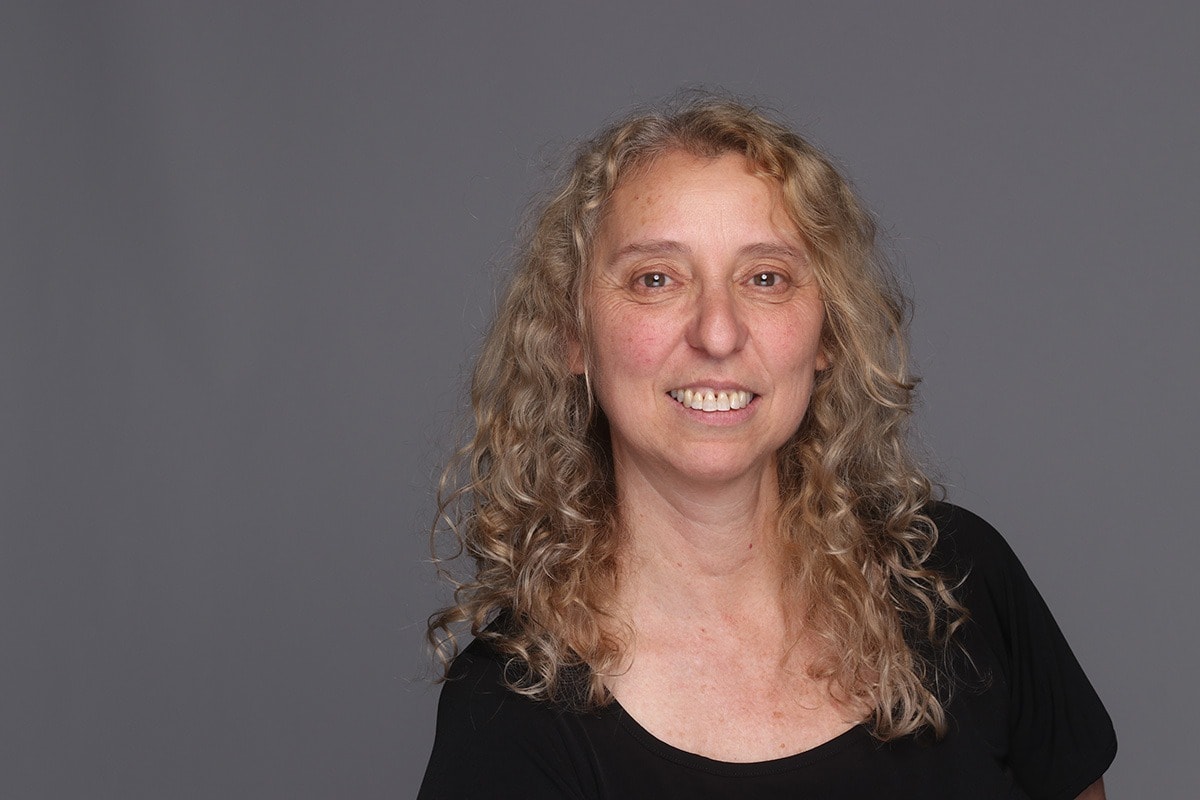
“There is something in the human work behind the cameras that is irreplaceable.”
On World Photography Day and in commemoration of the 40th anniversary of the return to democracy in Argentina, Cora Gamarnik reflects on the current state of photojournalism, revisiting topics she has studied extensively—the relationship between documentary imagery and the state of democracy—and venturing into other timely issues, such as the impact of artificial intelligence on the language of photojournalism.
By Alonso Almenara
In August 2020, a photo posted on Instagram by Argentine photojournalist Jorge Sáenz, a correspondent for the AP in Paraguay, achieved what seemed impossible for the residents of the small town of Limpio: the closure of the Waltrading company. This tannery had been polluting the Cerro lagoon for years, ultimately destroying all life in it. For Argentine researcher Cora Gamarnik, it’s a striking case of what a photographic image can accomplish. Still, it also serves as a model for understanding her vision of the documentary.
Gamarnik vividly remembers the news. The lagoon was divided by a dike: on one side, the water had radically changed color, turning magenta, while on the other side, it remained green. On the magenta side, there was nothing alive. Using a drone, Sáenz took a photo that, in a beautiful geometric composition, simply and powerfully, and through striking colors, conveyed the conflict and pollution. “The magenta color grabs your attention, makes an impact, adds mystery to the image,” says Gamarnik. “You see it, and it produces curiosity, a sensory jolt.”
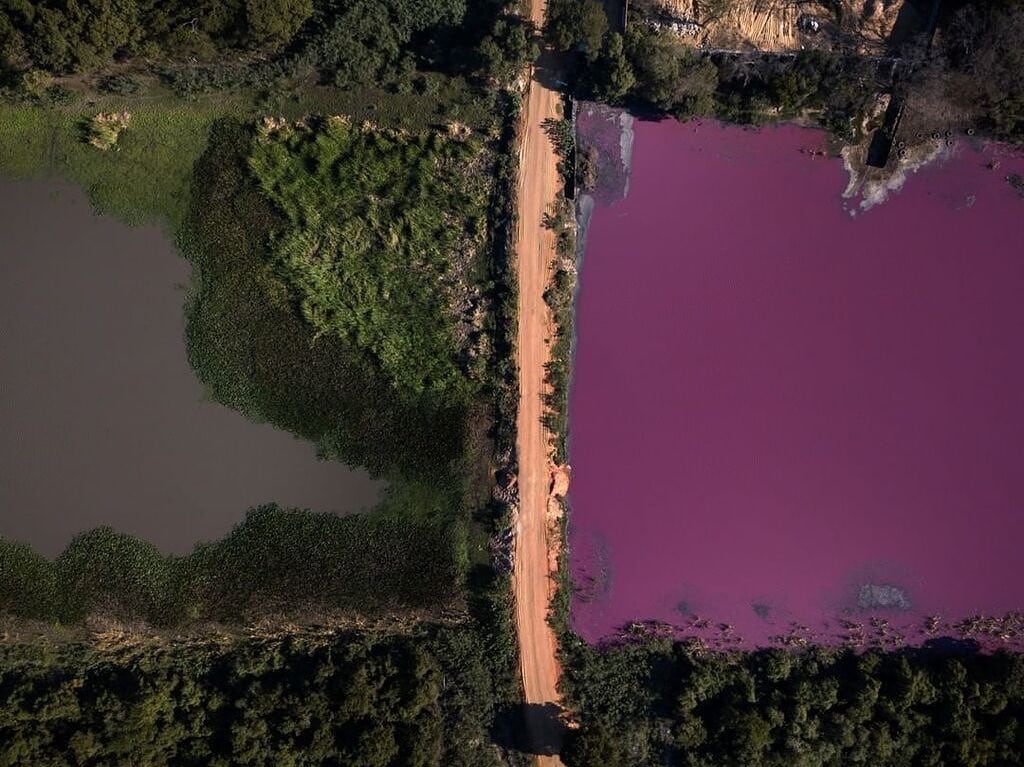
“But the photographer was just one link in a chain where there was a group of women demanding the closure of the tannery, where there were many social actors, media, including actor Leonardo DiCaprio, who posted Jorge’s photo and gave visibility to that image so that it would be known all over the world that a tannery was polluting the lagoon. In other words, photographs can be technically brilliant, artistically impactful, politically significant, but there must be social actors who can sustain them.”
Gamarnik is a social communicator, a doctor in Social Sciences, a teacher, and the coordinator of the Photography Studies area at the Faculty of Social Sciences of the University of Buenos Aires. She has written numerous articles and exhibitions related to the history of photojournalism in Argentina, mainly studying this discipline’s social and political relevance in historical events such as the Falklands War and the last military dictatorship.
Sáenz’s photo reminds her of a quote from Mexican researcher Roxana Reguillo, with which she deeply identifies: “Not only is the visual constructed socially, but the social is constructed visually.” Gamarnik adds, “Faced with the dangers that surround us, we must make room for poetry, denunciation, metaphor, documentation, everything we can. As Deleuze says, we must make a cry heard in visible things.”
World Photography Day is an excellent opportunity to talk to Gamarnik about the fate of photojournalism, especially in the context of the 40th anniversary of the return to democracy in Argentina. The conversation touched on topics such as the crisis of traditional media, the possibilities opened up by artificial intelligence, the role of agencies and photojournalism competitions, and the diversification of perspectives from women, indigenous peoples, and sexual diversities contributed.
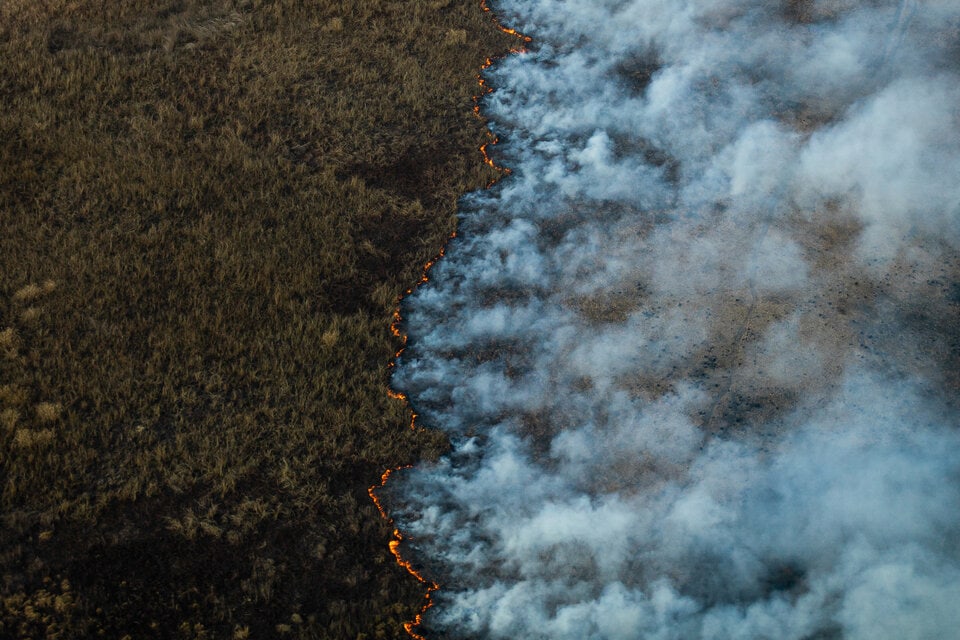
Tomás Cuesta (photo included in the 33rd Annual Argentine Photojournalism Exhibition, 2022)
How do you see photojournalism’s current state in the region, specifically in Argentina?
On the one hand, I see an enormous diversity of actors practicing the profession and an expansion of creativity, professionalism, and thematic diversity. This is thanks partly to the work of photojournalists in the media and collectives and freelance photographers who take on self-driven assignments. What’s happening is very encouraging regarding thematic variety, image quality, and the breadth of documented territory. However, simultaneously, there’s a huge precariousness in the profession among those working in the media, a reduction in stable photographer positions, and a loss of labor rights. It’s challenging for photographers to work as photojournalists; they practice the profession but can’t make a living from it. Many work independently, against the current of the media, due to political or personal convictions while holding down other jobs.
Many of them use social media to showcase their work. What concerns me is that these images get lost in the virtual space’s whirlwind. They impact public discourse and daily events, but unlike work published in the media, these photos aren’t accessible in manageable archives. So, it’s increasingly challenging to access archives of the present, archives of urgency. Photojournalists cover some topics but only circulate via social media.
On the other hand, there’s, at least in Argentina, a significant tradition dating back to the military dictatorship of photographers self-organizing to showcase their work. In Argentina, there’s the Annual Exhibition of Graphic Journalism. It’s an event where a selection of photos curated by photojournalists are presented to the public. The exhibition draws thousands of visitors, not only in Buenos Aires but also in other cities in the country, and gives significant visibility to these works. They are included in a printed catalog and carefully archived in the Photographic Library of the Association of Graphic Reporters of the Argentine Republic. It’s a valuable source where the best of Argentine photojournalism is duly cataloged and preserved.
“Here, we’ve experienced real ‘psychological action’ campaigns against the population, designed to deceive and manipulate. Images play a crucial role there because they’re being used to create fake news. We have cases of false images, taken out of context, captured in one situation and published as if they were obtained in another, shared by politically prominent figures in Argentina with concrete electoral prospects.”
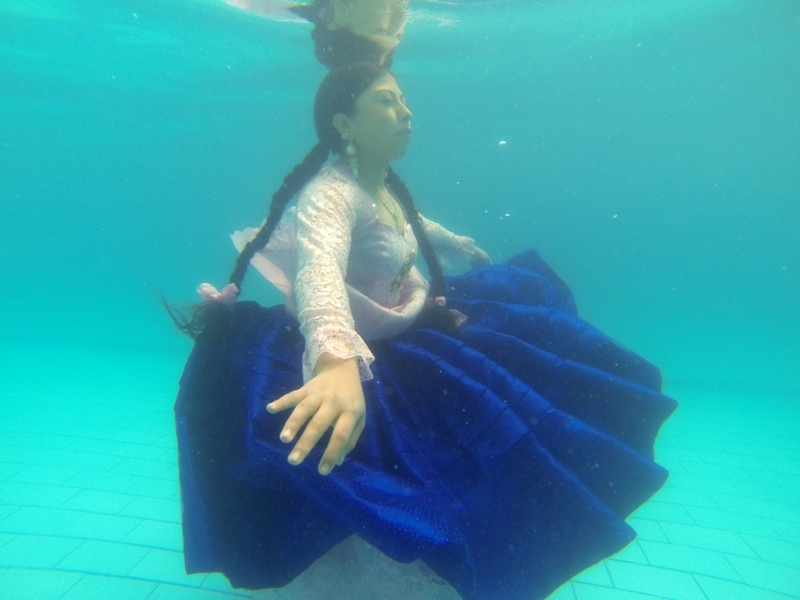
Sueña, by Wara Vargas (Marrón collective)
You mentioned the economic difficulties of the media and the precariousness of photojournalism. What impact do they have on democracy?
We live in a moment of transition and reconfiguration of traditional media and their role in public discourse. Here in Argentina, for example, some media outlets have transformed into biased platforms: they are no longer journalistic outlets but serve economic interests—agricultural or financial interests—and use journalistic channels to advance their economic plans and political agendas. In this sense, democracy is increasingly at risk because we often don’t know or can’t verify which information is trustworthy and which is false, created to serve specific interests. Genuine campaigns attempt to deceive the population, push specific issues onto the agenda, spread deliberate lies, and launch attacks on public figures.
Images play a crucial role because they are used to create fake news. We have cases of false pictures taken out of context, captured in one situation and published as if obtained in another, shared by politically prominent figures in Argentina with concrete electoral prospects. Here, we’ve experienced campaigns of what is often called “psychological action” against the population, designed to deceive and manipulate. And from the broader public perspective, we still lack effective tools to defend against this. On the other hand, there is the segmentation of audiences. Younger demographics no longer watch television, read newspapers, or listen to the radio. They “switch off” from information, disconnect, or rely solely on what appears on their Instagram through their network of friends. This creates very closed niches without dialogue or communication with other sectors. I believe that, on the one hand, this phenomenon is a form of self-defense against lies. Still, it is also grave for the construction of democracy because it greatly restricts access to information for these segmented audiences.
Are you concerned about the use of artificial intelligence in photojournalism? I was thinking about this when you talked about fake news. But I’m also curious to know if you are optimistic about these technologies’ impact on the evolution of photojournalistic language.
By definition, I don’t believe in apocalyptic or integrated discourses to borrow Umberto Eco’s expression. I believe that the use of any technology, including artificial intelligence, depends largely on the balance of power in the political arena. These tensions can favor certain uses of technologies that promote equality, social rights, justice, and denunciations of ecological destruction, or they can have the opposite effect. It all depends on social forces, political forces, and the organization we can build as those who believe that the world can still be better than it is and that we have a responsibility in that regard.
Images created with artificial intelligence won’t bring about an apocalypse, but they won’t save the planet. They are new tools we have to learn to deal with, to think with, and to learn how to use them. Nevertheless, I believe there is something irreplaceable in the human work behind the cameras. I see photographers covering various social issues, ecological problems, grassroots cooperatives’ work, life in Argentina’s wetlands, and self-organization for housing construction. There are all sorts of projects, but they are also at risk. Many people invest their time, work, intelligence, and creativity to inform us about what is happening in these territories that we haven’t seen before. The images take on various aesthetics, styles, and techniques. What is needed is more support, whether public, private, or mixed, to allow these projects to be sustained over time.
I would like to talk about the contribution of women, indigenous peoples, and sexual diversities to photojournalism in recent decades. To what extent has the diversification of perspectives and places of enunciation transformed the language of photojournalism?
For me, there is a turning point in Argentina related to the conquest of numerous social rights and those related to sexual diversities, such as equal marriage and the legalization of voluntary pregnancy termination. These achievements resulted from a sustained, massive, and cross-sectional struggle over time. There is also a lot of work being done to break ethnic stereotypes. Today, much more awareness and collectives are working on these issues. Including women in photojournalism took decades; forty years ago, there were only a handful. Women were slowly incorporated into the profession, and they expanded perspectives, subjects to photograph, and ways of working, and succeeded in challenging and making visible the sexism in newsrooms. There was a skewed distribution of themes, issues women could cover, and coverage reserved for men, not to mention diversity. There have been significant democratizing advances in all of this. However, this is at risk now due to the advance of far-right sectors.
I also believe that many photographic collectives are engaged in important reflections on how to represent themselves, to stop being narrated by others, and to combat stereotypes, discrimination, and the stigma with which they have historically been portrayed. There are very interesting debates in this regard, such as how indigenous peoples were portrayed, how “slums” were shown, how young people from marginalized sectors were depicted… and how they want to be represented in the first person. These debates are encouraged by the LGBT+ community. They assert pride in the face of what tried to be depicted as shameful, visibility against concealment. This community took to the streets, showed themselves in public spaces, represented themselves, and said: “We are proud of who we are, of what we do, of the decisions we make about our bodies.” This struggle also takes place in the realm of images. Gay pride marches are celebrations of color, shapes, bodies, and images, and photographs capture that.
“Photojournalism is always a contextualized practice. If there is a government that represses, as happened here during the military dictatorship or the Macri government, poetry, visual experimentation, and metaphor lose space because urgency gives way to photos that document that violence. Both things can be done, but if rubber bullets and tear gas are being fired at you, you can take a certain type of photo.”
In Argentina, other collectives like Identidad Marrón and La Garganta Poderosa exist. Their photographic work also involves self-representation, challenging dominant and discriminatory visibility. The young people killed by trigger-happy police officers are brown. They bring this to the forefront. They expose it. The trans collective in Argentina has achieved the creation of the Trans Memory Archive, an unprecedented experience in Latin America. They share their photos, hold exhibitions, publish books, tell their stories, and denounce the repression they have faced. I believe it is very important that a collective that was so battered, repressed, and humiliated comes out not only to say, ‘we are alive and standing,’ but also to show their images, to tell that they could also be happy, that they could be who they wanted to be.
In all these aspects, we have taken significant steps in Argentina. These advancements will also need to be defended vigorously because, to put it simply, neo-fascist elements are trying to attack these hard-won rights.
I would like us to talk about the style of current photojournalism. Some time ago, I interviewed a specialist who told me, for example, that almost all the winning stories in a significant Latin American photography contest had something subjective about them. He saw a shift towards dreamlike or magical images mixed with more realistic ones. Do you see any of that as well?
I think that photojournalism is always a contextualized practice. By this, I mean that if there is a government that represses, as happened here during the military dictatorship or the Macri government, poetry, visual experimentation, and metaphor lose space because urgency gives way to photos that document that violence. Both things can be done, but if rubber bullets and tear gas are being fired at you, you can take a certain type of photo. That also happened in Chile, Colombia, and Ecuador. Photographers turned to documenting social protests and repression. And that was what was needed at that moment. In Argentina, a great photographer like Pablo Piovano, who creates long-range works with highly poetic images, ended up with his whole body covered in rubber bullet wounds during a protest against the Macri government. There are photos of him, bloodied but still holding his camera high. Poetry sometimes has its space, and violence can also be documented with poetic angles. But it’s not always like that, and if it’s not, you have to document what is happening, no matter how harsh it may be.
On the other hand, it’s essential to make a distinction between photojournalism as such and the images awarded in photojournalism competitions. This shift towards subjectivity is probably related to a bias in the competitions, where the most surprising, spectacular, visual trend of the moment or the combination of subjectivity and politics is rewarded. Some perspectives have to do with what happens with the juries at that moment or with photographs that can be easily understood in any political context, so symbolic and understandable images are chosen, whether here or in China. That’s also a problem: the homogenization of the type of images that are awarded.
I want to say something, though. You cannot be a photojournalist without having an artistic view of reality. The photojournalist must transform a lived experience into an image; from the events scene, they make decisions about urgency, achieve visual syntheses, and condense an event into an image. And this, in turn, if it’s for a particular medium, is influenced by editorial lines. They need to know what the media will want to publish. They have to do it quickly, sometimes without the time they need. Photojournalism is a practice that demands being on the scene of events and having a privileged and acute perspective on what’s happening. But at the same time, those who practice it are often in a subsidiary position regarding their control over their images. The images become mediated by the media’s discourses for which the photojournalists work. There is a constant tension in that sense. As an additional element, what’s happening now is that photographers use their own networks, exhibition spaces, and, when possible, publications to showcase their photos.
You mentioned the biases in photojournalism competitions. What role do these contests ultimately play in the development of the profession?
I think there’s a kind of vicious circle there. For example, World Press Photo rewards a certain type of images in such a way that some photographers, thinking that it’s the greatest honor they can achieve in their work, build their photos with those award-winning photos as a model, stretching their artistic talents, their aesthetic skills, based on what is usually rewarded as informative or testimonial value or as narrative forms of events. As I mentioned, the danger is that the images become homogenized, local particularities are lost, the surprising is used, the focus is on dramatism, and there is less visibility of long-range social constructs that are more difficult to photograph and take time.
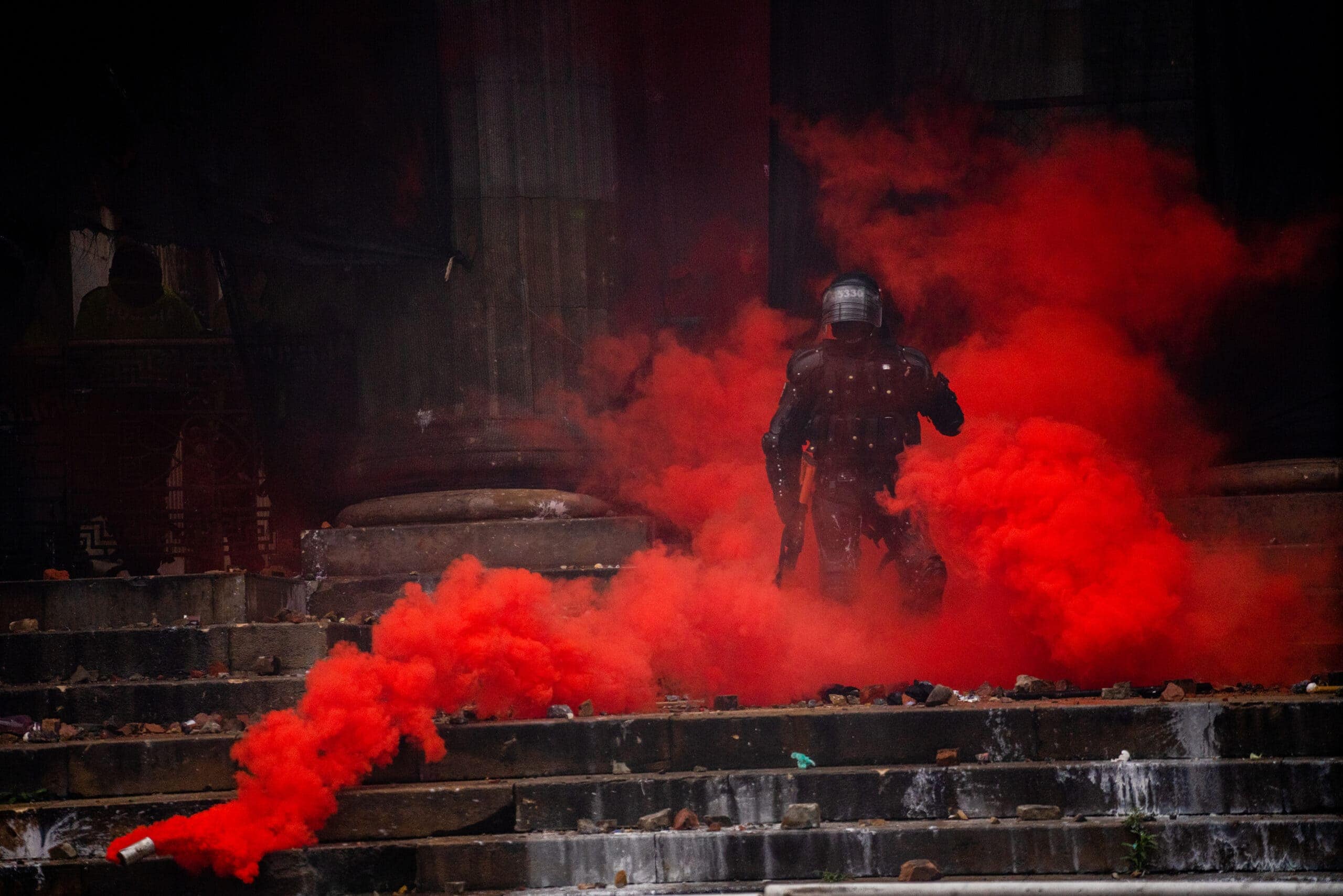
Federico Ríos Escobar (Colombia). Poy Latam – Winner Ibero-American Photojournalist of the Year 2023.
Does the same thing happen with news agencies or with NatGeo?
I don’t know how Nat Geo is working now. I know many criticisms and academic studies showed the ‘exoticization’ of our countries in the images they used to publish. But I haven’t studied what’s happening now with their photos. However, in relation to that, the Argentine photographer Rodrigo Abd told me about something that happened to him when he went to cover the war in Ukraine. Since there were limitations on accessing the front lines, especially after the deaths of several journalists, the Ukrainian government decided to restrict or outright prevent access to conflict zones. Instead, they organized a kind of press tour. They provided buses to take journalists, camerapersons, and photographers to the places where the Ukrainian government considered there was news or what they wanted to show. What happened is that these places became saturated with journalists; everyone was in the same square meter. This generated a homogenization of information. When Rodrigo Abd arrived, he found himself among 200 photographers from the world’s major photojournalistic agencies — James Nachtwey was right next to him, for example — and each photographer knew what photo they needed to take for their agency. Understanding the limitations imposed by war and the political and military interests at play, the question remains: What is the photographer’s freedom in these conditions?
Understanding the production conditions of the images is necessary to understand what happens with photojournalism in these cases. In this case, Rodrigo and the AP (Associated Press) photographers’ team won the Pulitzer Prize for that coverage. Under those conditions, they provided highly professional coverage, and Rodrigo, in particular, took it upon himself to share many of his photos on his social media with lengthy captions explaining what he could about the situation, what they experienced, and the stories of those who appeared in his photos. In other words, in some way, trying to overcome the limitations of work confined in time and space.
Finally, I wanted to ask you what makes a great photo, or in any case, what makes a photo go down in history? What sets it apart from the sea of images we see in the press and social media daily?
Of course, some formal characteristics of images relate to the photo’s inherent strength, the fact that when you look at a photograph, there’s a story inside that doesn’t need words to be understood or that words enhance it, help it expand. But I think that photographs, on their own, don’t tell the story. Photographs need the social actors who push, support or make them visible. In a beautiful text, Judith Butler says something like this: Photographs portray and construct events. They reiterate them, make them persist, and continue. It becomes crucial for their production, readability, unreadability, and their status as reality itself. She says, ‘Thanks to photographs, an event never ceases to happen.’ You look at a photograph, and the event happens again; the loved one looks at you again, and you are back in that place where you once were. That’s why photography relates so well to history and memory. Bredekamp, a German researcher, talks about ‘image acts,’ that is, the ability of photographs to act on political and historical events to influence history concretely. And a Chilean author, Andrea Soto Calderón, talks about the performativity of images. These are all fundamental and valuable concepts. In any case, social actions are needed to sustain photographs. A good picture alone is not enough.


